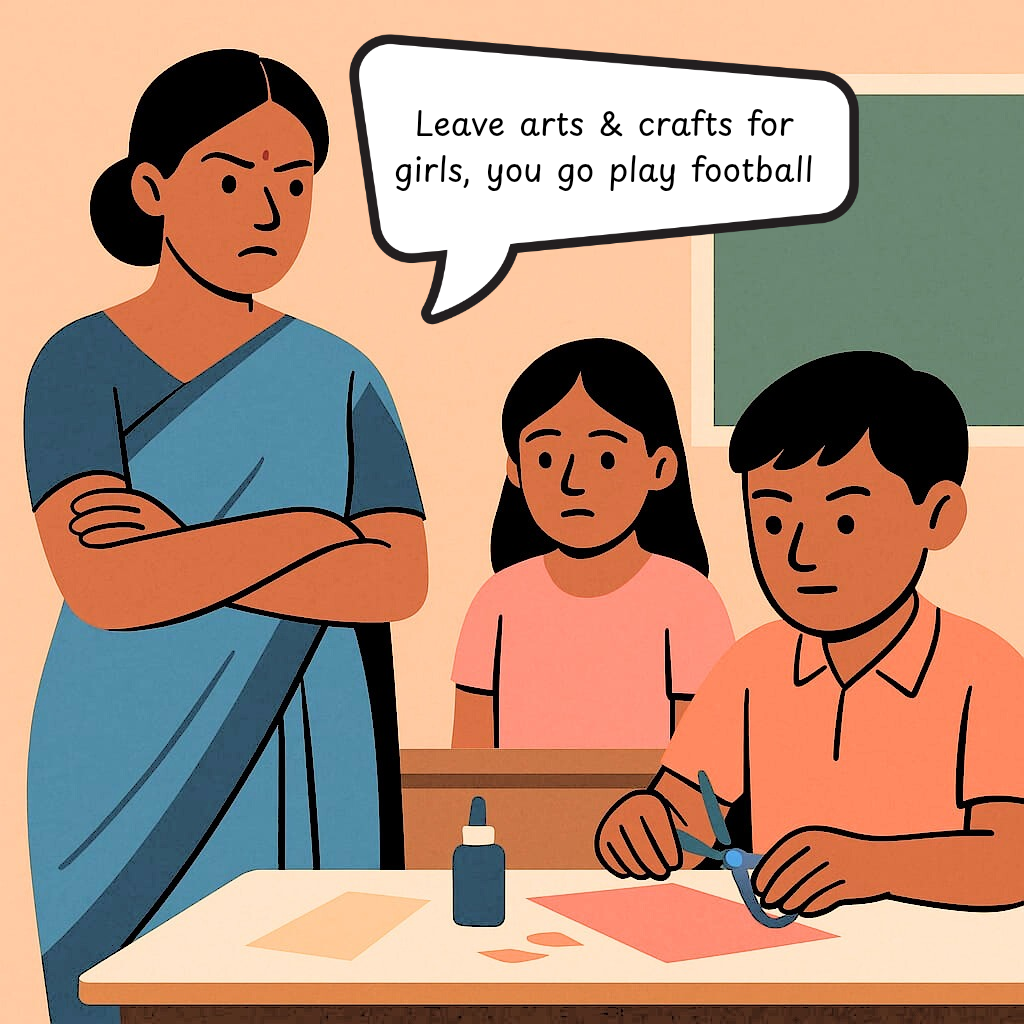Teachers are hard to change (or are they?)
Talking to teachers isn’t easy. Not because they aren’t approachable, but because they have years of experience that we, as young adults, often feel we can’t challenge. How do you tell someone who has spent decades in a classroom that the world they’ve taught in is changing? That the students they see today are different from the ones they taught five or ten years ago? That their instincts, shaped by years of experience, might need a shift?
It’s uncomfortable. It’s intimidating. But it’s necessary.
The Real Questions Teachers Ask
We just want to share some of the most pressing, complicated, and thought-provoking points teachers put forth during our sessions:
- “Kids today seem stubborn and overly sensitive. They know their rights better than their responsibilities”

The balance between discipline and kindness is trickier than ever. Teachers are expected to set boundaries without being “too strict” and be empathetic without being seen as pushovers. Where’s the middle ground?
2.”Some students call each other ‘gay’ or ‘meetha’ as insults. How do I stop this behaviour without making them defensive or rebellious?”
Casual homophobia is, well, too casual in schools. Many students don’t even realize the harm their words can cause. It’s all fun and games for them. How do teachers correct them without making them shut down or push back?
3.”Some girls do wear short skirts for attention. How do I handle this without shaming them or reinforcing outdated gender norms?”

This one is tough. Schools have dress codes, but the way you enforce them can easily become the biggest problem. How do teachers address this in a way that doesn’t make girls feel ashamed of their bodies? That they don’t take the blame of a boy scoring less marks.
4.”Gen Z is glued to social media, and their view of teachers has changed. There’s less respect, more questioning, and a different kind of authority dynamic.”
As harsh as it may sound, for students, teachers are no longer the sole keepers of knowledge. “I will just learn from ChatGPT if the teacher makes me stand outside the class.” Social media has given students more exposure but also made them more skeptical of authority. How do teachers adapt to this shift without losing their undeniable influence.
5.”I treat my students with respect and equality, but their families don’t. They go home to gender biases, caste biases, and outdated ideas. How do I make an impact when home influences are stronger than classroom lessons?”
A student may spend six hours a day in school, but the rest of their life is shaped by family beliefs. Can a teacher truly counter that influence?
6.”Some students come from backgrounds of violence, discrimination, or neglect. They act out, they struggle with trust, and they don’t respond to traditional discipline. How do I reach them?”
Not every student walks into the classroom with the same privileges. Trauma affects learning. How can teachers provide support when they themselves aren’t trained as counselors.
7.”I want to be inclusive, but I sometimes fear saying the wrong thing. How do I make sure I’m not reinforcing stereotypes myself?”
Even well-meaning teachers have unconscious biases. How can they unlearn and relearn without feeling like they’re walking on eggshells?

The generation gap is freaking real
The kids in classrooms today are growing up in a completely different world. Just five or six years ago, we weren’t as hyper-aware of our rights. We didn’t question authority as much. We weren’t constantly plugged into social media, absorbing ideas and opinions from across the world.
But Gen Z and Gen Alpha? They are bold, outspoken, and unafraid to challenge what doesn’t sit right with them. They have access to more information than ever before, but that also means they often lack patience for authority figures who don’t align with their worldview.
Teachers who once had unquestioned control over the classroom now find themselves in conversations about gender identity, mental health, and social justice. They never anticipated these topics would come up and naturally, were never trained to deal with them. They’re being challenged, sometimes even dismissed, by students who feel they know better. And that’s frustrating.
When we sit down with teachers, we realize they’re not just dealing with academic challenges. They’re grappling with shifting social dynamics, cultural shifts, and a generation that demands to be seen and heard in ways no generation before them has.
What’s the point?
When we talk about creating a better world, we often look at policymakers, activists, or media figures. But the real change starts in classrooms.
They need space to reflect. They need resources to help them adapt. And most of all, they need open conversations that acknowledge their struggles and equip them with the right tools.
A teacher who corrects a sexist remark today prevents workplace discrimination tomorrow.
A teacher who creates a safe space for LGBTQ students today helps build a more accepting society tomorrow.
A teacher who teaches kindness today raises future leaders who solve problems instead of creating them.
So the question isn’t “Do teachers need to change?”
The question is “How do we support them in doing so?”
And that conversation? It starts with us.
If you’ve read till the end, please do us a favour –
Join us in creating safer classrooms!
Author

